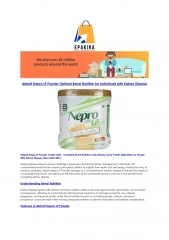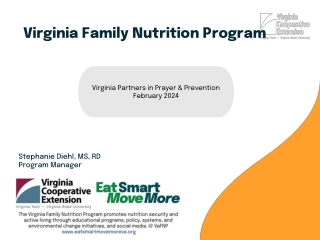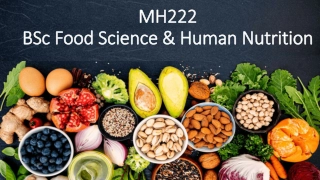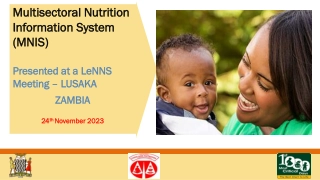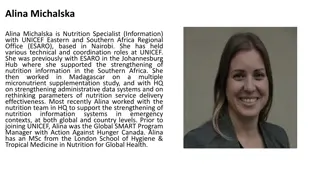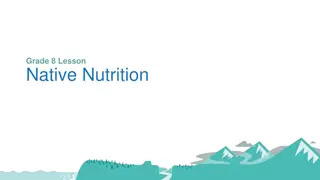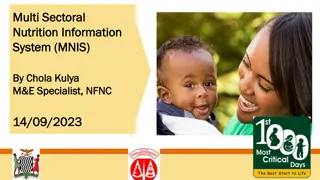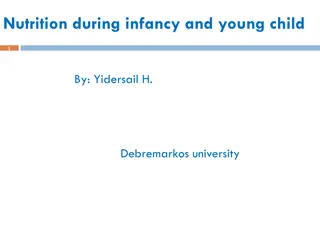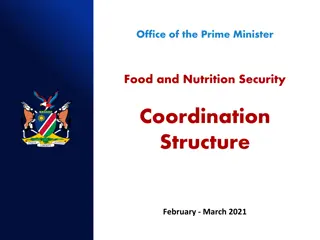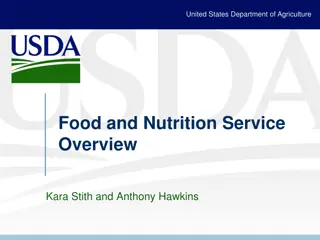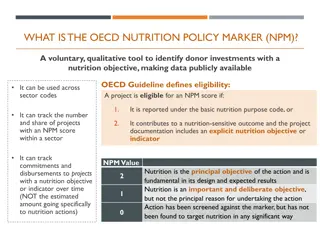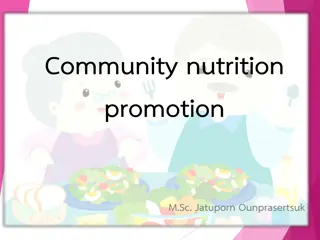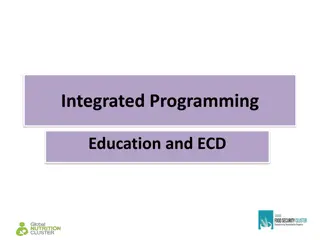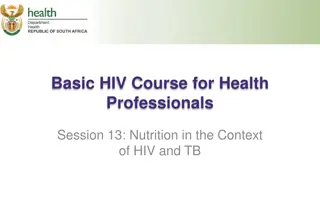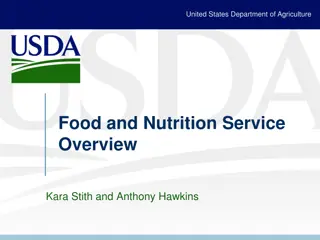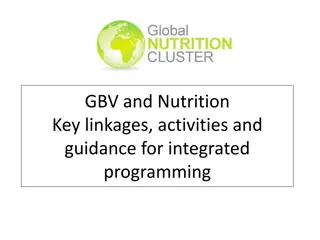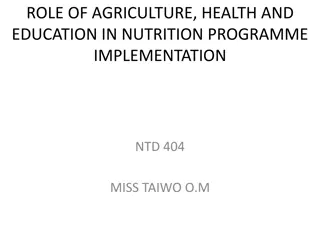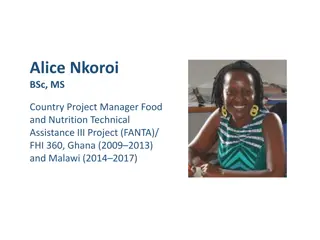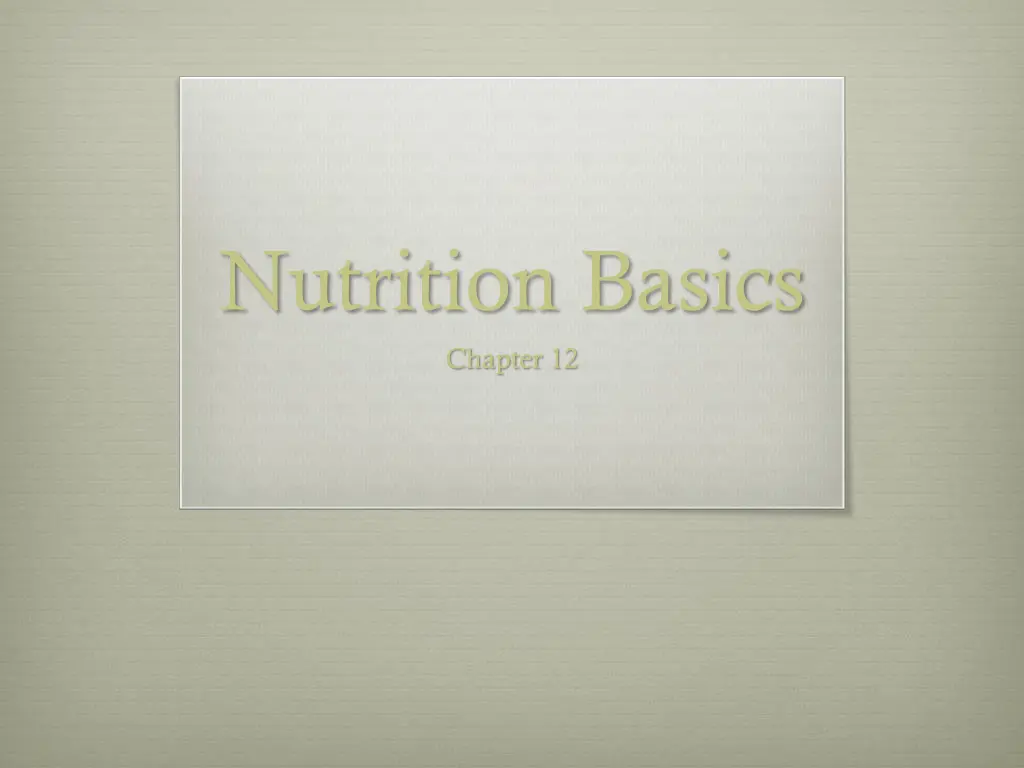
Understanding Nutrition Through History and Science
Explore the evolution of nutrition from ancient beliefs in magical food powers to modern scientific discoveries by figures like Antoine Lavoisier. Learn about essential nutrients, oxidation, and respiration, and how they relate to physical well-being. Discover the significance of daily values and dietary guidelines in choosing healthful foods for optimal nutrition.
Download Presentation

Please find below an Image/Link to download the presentation.
The content on the website is provided AS IS for your information and personal use only. It may not be sold, licensed, or shared on other websites without obtaining consent from the author. If you encounter any issues during the download, it is possible that the publisher has removed the file from their server.
You are allowed to download the files provided on this website for personal or commercial use, subject to the condition that they are used lawfully. All files are the property of their respective owners.
The content on the website is provided AS IS for your information and personal use only. It may not be sold, licensed, or shared on other websites without obtaining consent from the author.
E N D
Presentation Transcript
Nutrition Basics Chapter 12
Nutrition Basics Objectives Relate earlier scientific findings to today s understanding of nutrition. Vocabulary Daily Values (DVs) Dietary Reference Intakes (DRIs) Enzymes Essential nutrients Nu8trient dense Nutrients Nutrition Oxidation Recommended Dietary Allowances (RDAs) Respiration scurvy Explain the role of respiration and oxidation in nutrition. Identify and briefly describe essential nutrients. Explain how different nutritional guidelines are formulated and used. Choose healthful foods according to the Dietary Guidelines for Americans. Demonstrate how to use food labels to compare nutrients in foods. Plan healthful menus using nutrition guidelines. Relate the understanding of nutrition to physical well-being.
Nutrition History Highlights Ancient people credited food for having magical powers Around 400 B.C., Hippocrates, the father of modern medicine, taught that people could learn what was good for them by reasoning from observable facts Studies led him to believe that foods contain life-giving substance Not until the mid 1700 s that the scientific method proved him right
An Early Discovery British sailors suffered from lack of Vitamin C, which caused circulatory disease, bleeding gums, weakened blood vessels, and extreme fatigue. This was also fatal. The name for this condition was scurvy. A physician set up an experiment to find a cure and the illness only disappeared in the sailors that ate lemons and limes. This experiment gave the sailors a nickname called limeys, which is applied to British citizens today.
Oxidation and Respiration Chemist Antoine Lavoisier discovered that burning things required a certain gas which he named oxygen. Oxidation is the chemical reaction in which elements combine with oxygen. http://www.youtube.com/watch?v=FWNj-9vg4o0 Lavoisier also suspected that living organisms also use oxygen to create heat energy, similar to a candle. Living organisms (humans) are made up of carbon compounds. As organisms take in oxygen from the air, the carbon and hydrogen in their cells oxidize. Carbon dioxide and water vapor form during the reaction, releasing heat energy. The heat maintains body temperature and provides energy for organisms (humans) activities. This process is known as respiration.
Respiration Continued Lavoisier believed that what the body loses during respiration is replenished by nourishment of food. Thus, the study of nutrition was launched. http://www.youtube.com/watch?v=i8c5JcnFaJ0 Because of his work, Lavoisier is know as the father of nutrition
Elements of Nutrition Nutrition the science of how the body uses food Nutrients substances that are found in food and need by the body to function, grow repair itself and produce energy. Nutrients are the fuel for cell activity.
Essential Nutrients Water Carbohydrates Proteins Fats/Lipids Vitamins Minerals
Nutrient Dense Nutrient dense food supply many nutrients that are critical to good health in comparison to their low-to- moderate number of calories.
RDAs (RDA) Recommended Dietary Allowances Is a table supplied by the US government to give adequate amounts of specific nutrients needed by most healthy people. First established over fifty years ago. Supplies a detailed description of nutrient needs of eighteen population groups. Currently covers protein, ten vitamins and seven minerals

